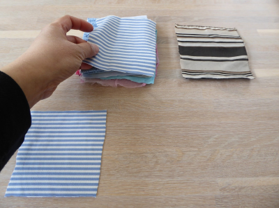
In Montessori Inspired Lifestyle® dementia care, activities are valuable opportunities for engagement — not just “crafts” or “distractions.” They’re moments that connect, calm, and build confidence.
But roles take that engagement one step further.
They give people a sense of purpose, belonging, and identity.
The difference is subtle but profound: it’s the difference between doing something meaningful and being someone needed.
Activities = Doing
Activities help restore coordination, awaken curiosity, and reconnect people to familiar routines — all of which build the confidence needed to take on real roles later.
They are the foundation of Montessori dementia care. They nurture ability, spark enjoyment, and rebuild trust in one’s own capability.
Key features of an activity:
- A task designed for engagement, stimulation, or enjoyment.
- Often one-time, short-term, or repetitive for comfort.
- Focused on participation and experience, not necessarily a real-world outcome.
 Examples:
Examples:
- Folding towels for relaxation or sensory satisfaction.
- Sorting silverware as a fine-motor or focus exercise.
- Planting seeds in a pot for sensory or memory engagement.
These are hugely important because they keep hands busy, minds focused, and spirits settled.
They help us discover what feels natural and enjoyable — insights that guide us toward the creation of meaningful roles.
For a list of great examples of roles and activities – organized by theme and purpose – that are fully Montessori-aligned, join us for the next session of:
Engage & Empower: Purposeful Activity Design
and…find out how to implement them in your residence – step by step.
From Activities to Roles
Activities and roles are deeply connected, not competing ideas.
Activities often come first. They awaken ability and reveal what a person still loves or remembers how to do. When we observe someone thriving during an activity — folding towels, sorting cards, painting or watering plants — we begin to see the outline of a possible role.
An activity might be the spark.
A role is where that spark finds purpose.
Roles = Being
A role goes a step further — it gives a person a real, ongoing identity within their community.
It carries purpose, responsibility, and continuity.
The person’s contribution has visible or social value — others rely on it.

Examples:
- Being the Laundry Folder who tidies towels each morning.
- Being the Dining Room Helper who sets tables daily.
- Being the Plant Caretaker who waters and trims every Monday.
Here, the task becomes part of their social identity.
It can be repeated, anticipated, and even missed by others if not done.
That’s what transforms a simple activity into a role — the shift from participation to contribution.
When someone holds a role, they don’t just stay busy; they belong.
They become part of the rhythm of community life, and that consistency brings both comfort and purpose.
In Montessori dementia care, roles are the bridge between ability and identity — they remind each person, every day, that they are needed and valued
How Montessori Distinguishes the Two
Montessori care emphasizes moving from activities toward roles whenever possible, because:
- Roles reinforce autonomy and self-worth.
- Roles create predictability and belonging (“I have a place here”).
- Roles build on the person’s authentic abilities and life experiences, allowing them to engage in meaningful, real-world activity.
In short:
Activities help people stay engaged and confident.
Roles build on that engagement to create purpose, belonging, and identity.
For a list of great examples of roles and activities – organized by theme and purpose – that are fully Montessori-aligned, join us for the next session of:
Engage & Empower: Purposeful Activity Design
and…find out how to implement them in your residence – step by step.




